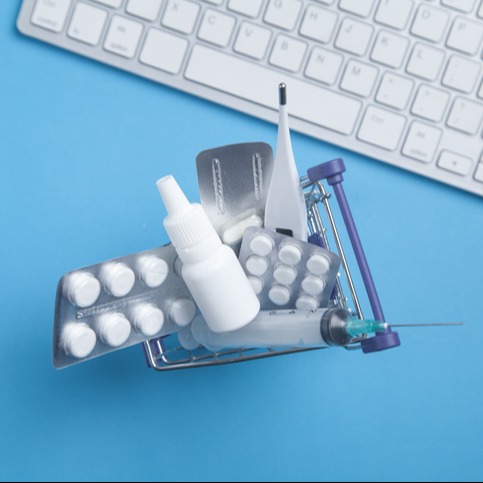
Macrobid (nitrofurantoin) is not a penicillin. However, it is still considered an antibiotic. Macrodantin and Macrobid are brand names for the drug nitrofurantoin. Nitrofurantoin is a broad-spectrum antibiotic primarily used to treat urinary tract infections (UTIs). They are not classified as penicillins because their chemical structure, mechanism of action, and spectrum of activity are significantly different from penicillin.
Key Takeaways
Macrobid (nitrofurantoin) is not a penicillin due to the chemical structure, mechanism of action, and spectrum of activity differences.
Nitrofurantoin is more commonly prescribed for patients with UTIs because it is highly effective against Gram-negative and some Gram-positive bacteria in the urinary tract, such as Escherichia coli and Enterococcus spp.. However, it has limited activity outside the urinary tract due to rapid excretion. While penicillin is ineffective against β-lactamase-producing bacteria.
Beta-lactamase-producing bacteria (BLPB) are bacteria that produce beta-lactamase, an enzyme that inactivates antibiotics. Beta-lactamase-producing bacteria (BLPB) can cause infections directly, or indirectly by protecting other bacteria from antibiotics.
Looking to purchase Macrobid (nitrofurantoin)? Buy from Planet Drugs Direct (a CIPA-certified online pharmacy) for more than 80% lower than your current prescription price. Click here to purchase.
Differences Between Macrobid and Macrodantin and Penicillins
Here is how to better understand how nitrofurantoin is not a penicillin:
Category | Nitrofurantoin (Macrodantin/Macrobid) | Penicillin |
Drug Class | Nitrofuran | β-lactam |
Chemical Structure | Nitro group attached to a furan ring | β-lactam ring structure |
Mechanism of Action | Disrupts bacterial DNA, ribosomes, and metabolism | Inhibits bacterial cell wall synthesis |
Primary Use | Urinary Tract Infections (UTIs) | Broad infections: respiratory, skin, etc. |
Spectrum of Activity | Mainly Gram-negative, some Gram-positive (UTI pathogens) | Mainly Gram-positive, some Gram-negative |
Systemic Effectiveness | Limited (rapidly excreted into urine) | Broad systemic effectiveness |
Resistance | Low resistance in UTI pathogens | High resistance due to β-lactamase production |
Allergic Reactions | Rare | Common (rash to anaphylaxis) |
Side Effects | Gastrointestinal upset, rare lung or nerve issues | Allergic reactions, gastrointestinal upset |
Clinical Limitations | Ineffective for systemic infections | Ineffective against β-lactamase-producing bacteria |
Mode of Administration | Oral only | Oral and injectable forms available |
Breaking Down Why Macrobid and Macrodantin Are Not Penicillin
Here’s a breakdown of why nitrofurantoin is not considered to be a penicillin:
Chemical Structure Differences
Differences in chemical structure:
Nitrofurantoin (Macrodantin/Macrobid):
Belongs to the nitrofuran class of antibiotics. Features a nitrofuran ring, which is distinct from the β-lactam ring structure found in penicillin.
Penicillin:
Belongs to the β-lactam class of antibiotics. Contains a β-lactam ring that is critical to its antibacterial activity.
Mechanism of Action Differences
Differences in mechanism of action:
Nitrofurantoin:
Works by disrupting bacterial DNA, ribosomes, and metabolic processes through reactive intermediates produced inside bacterial cells. Broadly bacteriostatic or bactericidal, depending on the concentration.
Penicillin:
Inhibits bacterial cell wall synthesis by binding to penicillin-binding proteins (PBPs), leading to bacterial cell lysis.
Spectrum of Activity Differences
Differences in spectrum of activity:
Nitrofurantoin:
Primarily effective against Gram-negative and some Gram-positive bacteria in the urinary tract, such as Escherichia coli and Enterococcus spp.. Limited activity outside the urinary tract due to rapid excretion.
Penicillin:
Effective against a variety of Gram-positive and some Gram-negative bacteria. Broader systemic use compared to nitrofurantoin.
Resistance Profile Differences
Differences in their resistance profiles:
Nitrofurantoin:
Low rates of bacterial resistance, particularly for UTI-causing pathogens.
Penicillin:
Resistance is more common due to widespread use and production of β-lactamases by some bacteria.
Side Effect Differences
Differences in common side effects:
Nitrofurantoin:
Can cause gastrointestinal upset, pulmonary reactions (rare but serious), and peripheral neuropathy. Typically used short-term for acute UTIs or as long-term prophylaxis in specific cases.
Penicillin:
Commonly associated with allergic reactions, ranging from mild rash to anaphylaxis. Less commonly causes severe side effects like gastrointestinal issues or blood disorders.
Clinical Use Differences
Differences in their clinical use:
Nitrofurantoin (Macrodantin/Macrobid):
Used specifically for uncomplicated lower UTIs. Not suitable for systemic infections due to limited tissue penetration.
Penicillin:
Used for a wide range of infections, including respiratory, skin, and soft tissue infections, and more severe systemic infections.
Looking to purchase Macrobid (nitrofurantoin)? Buy from Planet Drugs Direct (a CIPA-certified online pharmacy) for more than 80% lower than your current prescription price. Click here to purchase.
Rely on PlanetDrugsDirect.com to Buy Online Macrobid
As a trusted prescription referral service, we offer important benefits whenever you order online. Each of our partner pharmacies and/or government-approved dispensaries is committed to providing the best experience possible of any online prescription referral service on the internet. We offer:
Low prices
Quick turn-around times
Generic and brand-name medications
Unparalleled customer service
Sources
U.S. Food and Drug Administration. (2009). Nitrofurantoin monohydrate/macrocrystals [Label Information]. Retrieved from https://www.accessdata.fda.gov/drugsatfda_docs/label/2009/020064s019lbl.pdf
Kunin, C. M. (1980). Antibacterial activity of nitrofurantoin: Mechanism of action and implications for treatment of urinary tract infections. PubMed. Retrieved from https://pubmed.ncbi.nlm.nih.gov/7435512/
Gupta, K., & Hooton, T. M. (2017). Nitrofurantoin and recurrent urinary tract infections: Evidence and challenges. National Center for Biotechnology Information (NCBI). Retrieved from https://pmc.ncbi.nlm.nih.gov/articles/PMC5478436/
 Medically reviewed by
Medically reviewed by 





